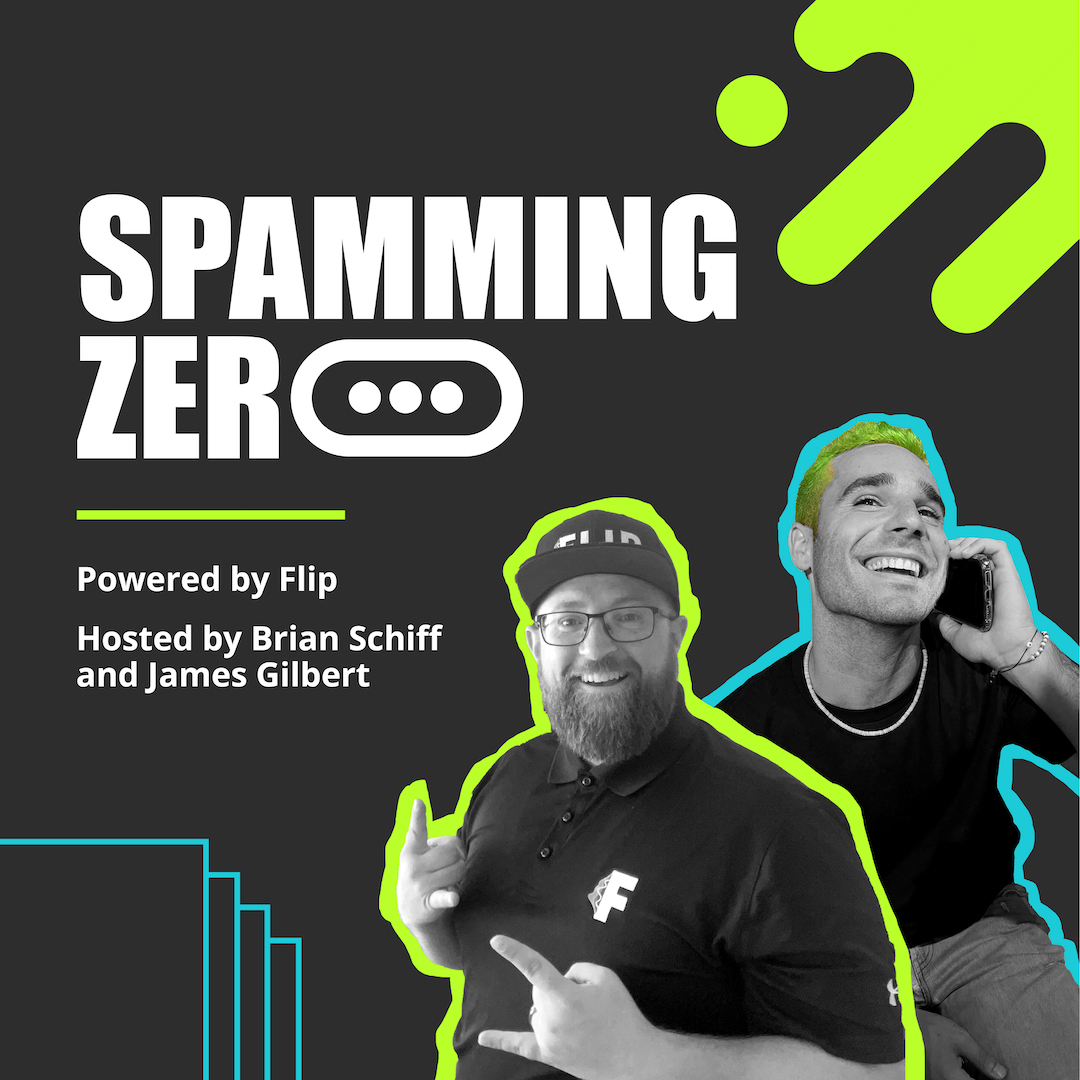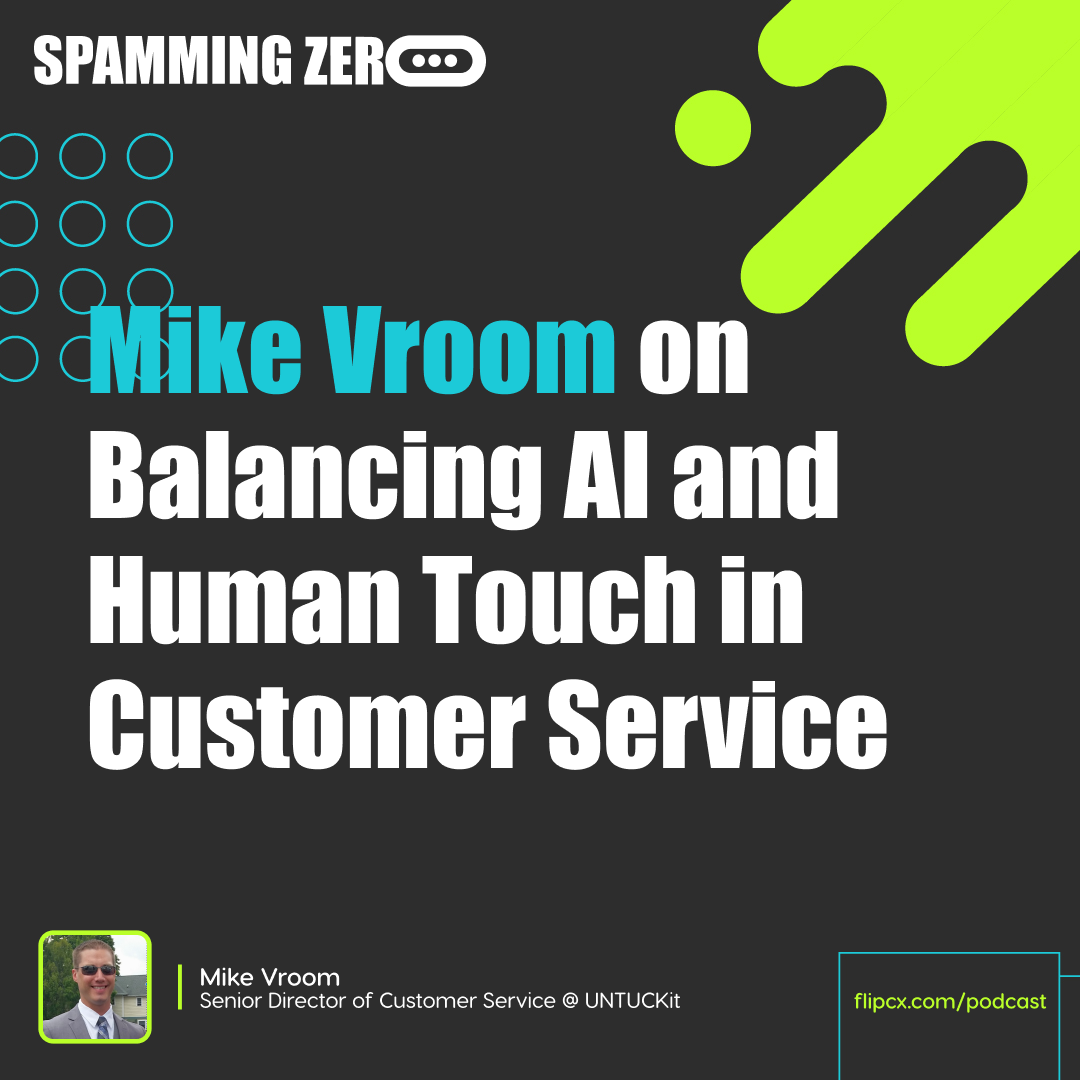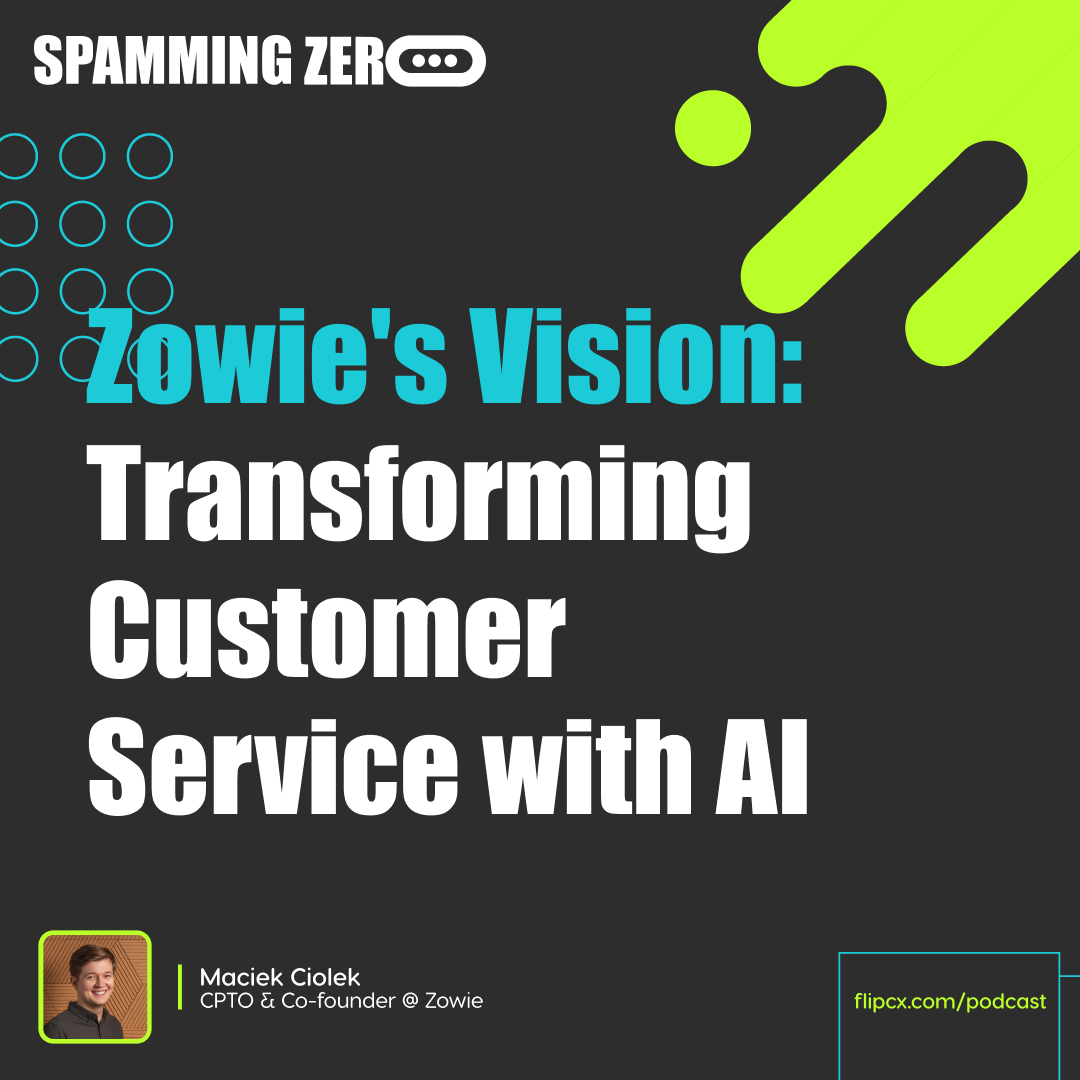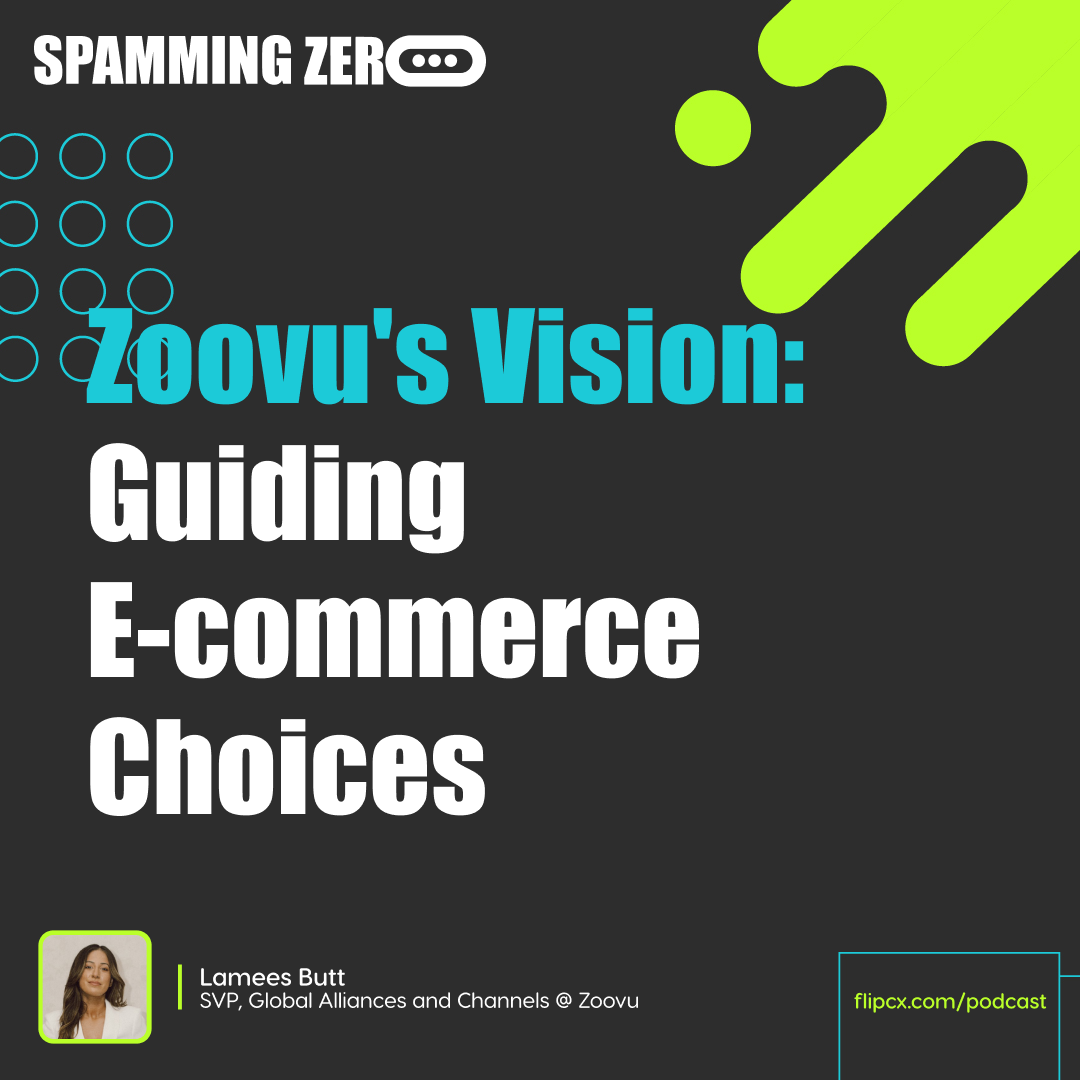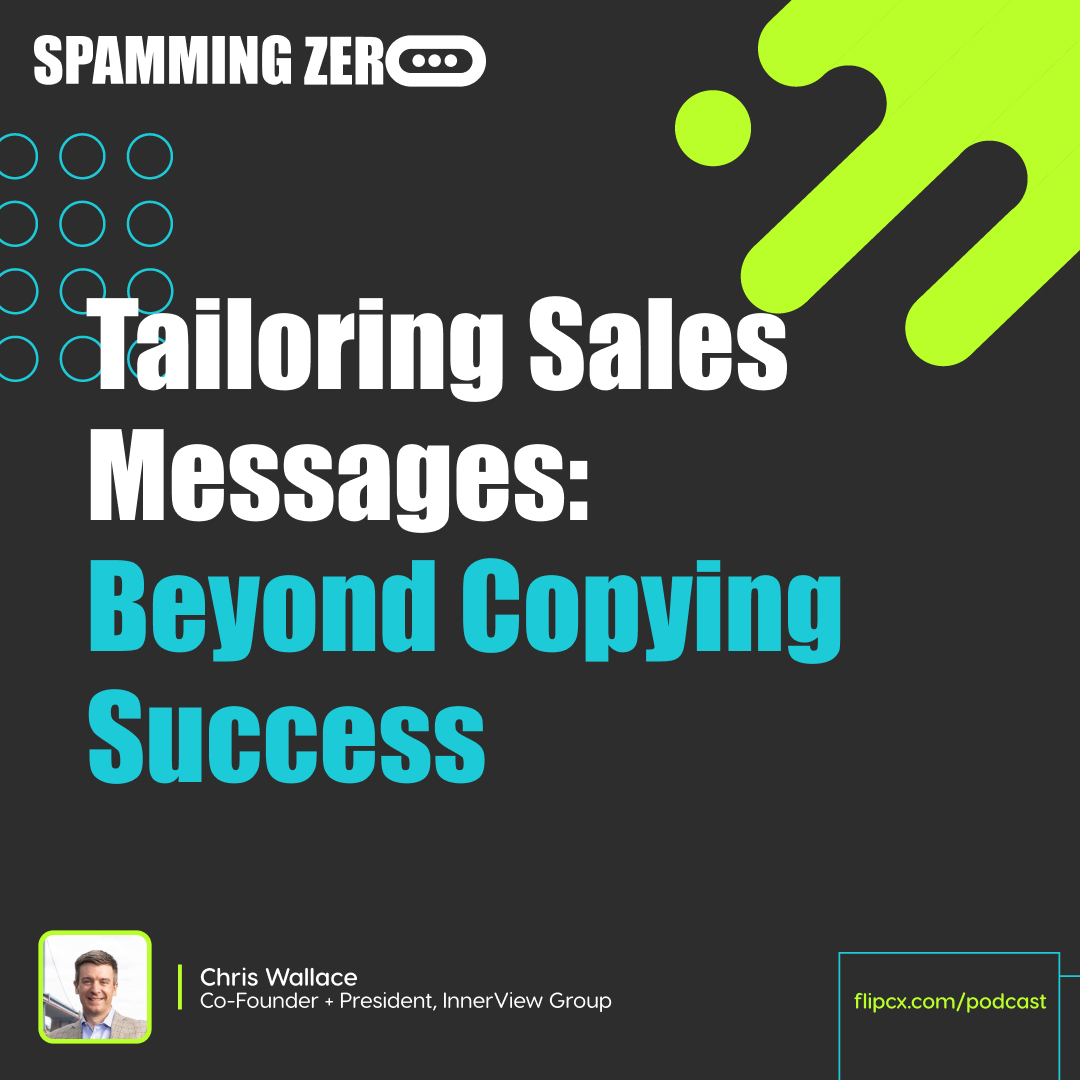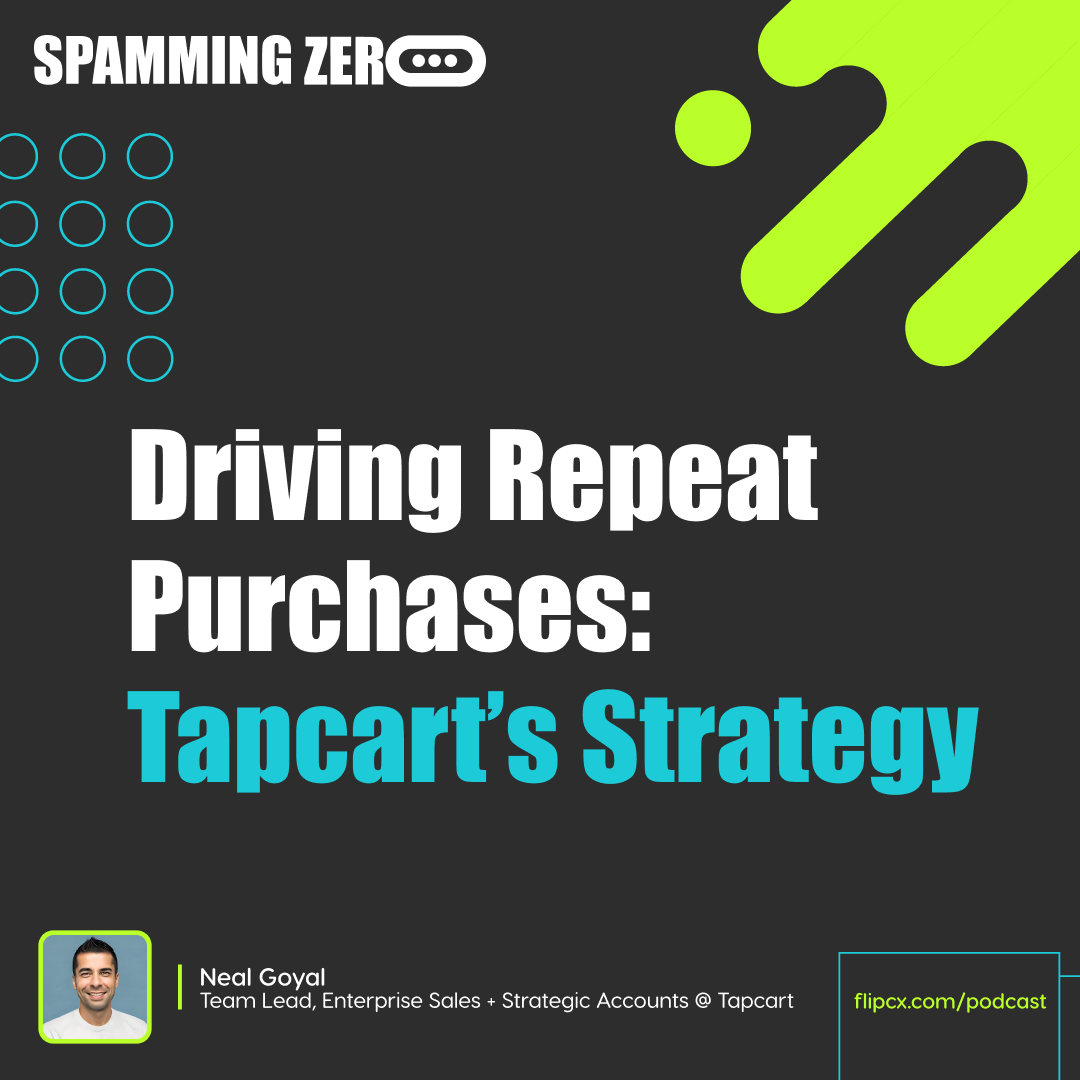Episode 15: Thankful CEO Ted Mico On Why Automation Is Your Best Friend When It Comes To Scalable CX
- 0.5
- 1
- 1.25
- 1.5
- 1.75
- 2
James: I'm James.
Brian: And I'm Brian.
James: And this is Spamming Zero. Ted, question for you. It's part of our podcast blooper real and our teaser for this. I got Brian's name wrong for the first two weeks that I was here at RedRoute. Pronounce your name for the audience.
Ted: Yeah. My name is Ted Mico.
James: Not Miko folks, Mico.
Ted: Not Miko, Mico. I'll answer to both I've answered to many things, bastard, something, but Mico is usually the most common.
Brian: Ted, would you agree with the statement that ultimately, every brand sells one, their product and two, their experience?
Ted: I'd say that the bright line between product and experience, is nonexistent. So actually, I would say those two things are probably just both sides of the same coin. I think they're interchangeable in a lot of ways as well.
Brian: So, I agree with what you said, Ted, but I also think that there's always the seesaw between the precision of a statement and the simplicity of it. And there's a lot that can be gained from simplicity, even though, there is lost precision. So I agree with you, they're so intertwined and a very big part of the customer experience is the product experience, but there's so much talk in this world of customer experience about how to sell it in your organization and how big is it? Is it fluff? Is it value? How do you measure it? How do you think about it? And to me, that is a very clean way to think about it that gives it the respect that it deserves. To put it, where everybody understands the importance of the product to the business, and if you put the experience on that level next to it, then that's a really good starting point for an organization to go about driving value against it.
Ted: Let's semi logically unpack that a little bit. Say, what is the product? Well, the product is, if it's clothing, it is the cotton and the stitching and the color and the pattern or whatever, but it's actually, how it fits, what it says about you, how other people react to it, all those things play a role in the quote unquote product. So the customer experience, i. e. The experience of wearing the shirt, let alone post purchase customer experience, et cetera, is actually just as valid as the 20% viscous, 90% cotton or whatever so it's 110%. But the idea, this is where I think the boundaries get a little fuzzy as far as brands are concerned. Yes, of course. I mean look, let's face it customer experience or especially customer success is, or has been always the caboose, it's not driving the engine like it's product and marketing and sales, and when things are going well," it's, oh, this is fantastic. Oh, we'll have some issues on the other side of things" and those people are if they're lucky, they're in the same time zone if they're really lucky they're in the same building, but very rarely there, it's a problem that needs to be sorted as opposed to an opportunity that needs to be tackled. So I think that if you're a believer, like I am that sort of outlook dictates outcome, it depends on the outlook that you have for customer experience or customer success. So if you think of it as a relationship engine this is our chance to have a relationship with a customer, then there's a chance that's exactly what you'll get. If you think of it as a cost center and therefore you're going to try and deflect as many tickets as quickly as possible. Like then that's probably what you'll get it too, which will lead to a great deal of customer dissatisfaction, but you've achieved your primary result, which is cost savings. So it really kind of depends on how a brand is thinking of the sector in general, as to what strategies they're deploying. And, and I'd say for good or for bad, I think that there are more and more brands now that are starting to get the message that as product becomes more and more commoditized in general, especially on the internet, you can find the same black dress in thousands of different places. Now like the very marginal differences brand differences between them, then the service and the customer experience that's attached to it, whether it's pre- buy or post- buy is your only defining characteristic, and therefore you better double down on that, especially as customer expectations keep dramatically increasing. So customer expectations for expert personalized and fast customer experiences are now kind of completely out of whack with the ability for any brand to deliver against, and that's creating that expectation gap that we're seeing play out. The brands that are best able to bridge that expectation gap are the brands that are surviving, and I do think that there will be brands that literally go to the war because they put their customers last and they put service last. I mean, CEOs are always like, especially a popular brands are always talking about being customer centric, et cetera, while they're slashing customer service budgets and I do think that there will be many brands that go to the war, but if this recession is deep and wide, like people think it might be because they misunderstood the signals that the customer was giving about how important it is to provide the service they want.
James: I think of couple of different examples here. I think the better a band is when you see them live, like the music is their product, right? The experience that you have live becomes part of the product over time, but only if they can actually bridge between the two, and another example that I like to think about is Aviator Nation really, really awesome brand
Ted: Love them.
James: Their clothing is, the product quality is top notch, right? So much in fact that they can charge the premium, but it's also the experience of knowing that you have that product and you're repping that brand. It's become such a big thing that they're one of the few apparel brands that really have gone completely viral through social media, like Instagram and TikTok. And so when you think about it, the bridge of what we're selling is like, ultimately the closer you can get to selling that bridge than just the product and the experience. That's what I think is the stickiness of what everyone's trying to search for. And that's what I think that brands ultimately can shift the conversation into it being less cost centric and less like about that, and about cost cuts and more so about if you change this, here is the opportunity cost on the back end. The more sticky you can get with that process, I think that the better.
Ted: The financial mechanics of it are pretty obvious, i. e. the greater the brand loyalty, the higher the LTV, and especially when CAC costs spiraling up that getting more out of each customer becomes more important to any brand survival. So the weight, the path to that is absolutely through customer service, and I will say, here's my pet peeve, so there are brands, Aviator Nation isn't one of them that stalked me and have stalked me for years like have spent thousands of dollars on me and promised me everything chocolates, girls, fireworks, circus, acts, anything to get my attention. The one time, one time they have my attention is when I have a problem or a question. So at that point in time, finally, they have my attention. I'm up on their stage, I'm finally with you, now what? Well, the very people that have been stalking me, spending thousands of dollars, they disappear down a trap door right in front of me. Like they just disappear and then there's new bunch of people come along whose job that is to get rid of me as quickly and cheaply as possible. Like that makes no sense in a total customer journey drama, that makes no sense whatsoever. It's insane so this idea of a relationship that a one-to- one relationship at scale with your customer, I think that was the goal of a lot of musicians, especially that people that like the Radiohead of this world that realize that they don't even need a record label, they could actually go straight to their customers, but I think it should be the goal of every brand as well. But again, you have to, you have to then look at those customer touchpoints as opportunities for the relationship, not get out, fly SWAT and try and swap the person away as efficiently as possible. Because otherwise you'll get that opposite result, which is now I feel swatted. You've given me some really bad chat or digital IVR thing that I can't get out of, that is just wasting my time. The most valuable thing I have is my time and an inordinate amount of time is wasted. I'll give you the little nugget that started Thankful, was when I looked up and I think it was time magazine that said that in our average lifetime, each one of us will spend 43 days dealing with customer support. 43 days. That's over six weeks of my life that I'm dealing with like in Dante's Inferno, somewhere trapped between the third and fourth circle of hell. I truly believe that if technology can help give everybody half that time back, so three weeks of the life back to spend on a beach in Bali, not dealing with customer care. We are all batting on the side of the angels.
Brian: I love what you talked about with this idea of the brand is trying so hard, right? It's a competitive landscape. They're trying so hard to get the attention and the affection of you when they are trying to get you to purchase the product and then you turn it around, they're going outbound to you trying to get ahold of you, right? They're sending you emails, SMS, Ads. If they get like a 1% response rate on that, they're celebrating and that's like a huge home run and then the table turns around and the customer is seeking out the brand and it's run and hide and let's limit how often this is happening as best we can. To me, the mindset shift that needs to happen, at a very like literal and metric level is brands need to start looking at inbound contacts from customers as ads or touch that have a 100% reply rate with a hundred percent intent and a conversation that is valuable and thus a metric that you are motivated to maximize. So you need to be able to show that delivering a good experience in that conversation is having a positive impact on that customer, which is a data relationship that you can create and you need to be able to do that, have those positive conversations at scale. And this is where products like ours and like yours over at Thankful start to make this possible by orchestrating these conversations automatically so that it's right. Ask a marketer to send every single email and every single SMS or publish every ad and manually one customer at a time and that's just mayhem, nobody would ever do that. So you need to be able to bring the automation, which unlocks kind of the value. But if you can bring that sort of automation and that quality of experience to these inbound touch points that are going on and the experience can be good, then you're suddenly able to achieve in reality, in kind of the constraints of the real world, you're able to actually achieve that mindset shift where rather than trying to run and hide and limit these conversations, suddenly now it is in the best interest of the brand and the growth of the brand to maximize these conversations. And that is a huge mindset shift and when you talk about an LTV world and everything that's going on right now, these service touch points are so important and to be able to thrive in them and to do them at scale, and to be able to start really acting on them as a positive thing that you want to maximize is just a game changer.
Ted: I agree. So there's a whole bunch of things that I'd like to unpack a little bit. The first, is that in that you have this weird Chinese war between the acquisition side of most businesses and the retention side, and that's part of the problem is an institutional way of thinking where the acquisition side is all about acquiring data and frankly, the retention side is all about sloughing that data off in email, especially, and I'm sure in voice two people, customers tell you so much about themselves. They give you information that on the acquisition side of the business is priceless and they spend the marketing side of the business is spending a fortune, trying to fill out a three dimensional image of every customer, et cetera. On the service side, you're actually getting that. What happens to those tickets? They list literally disappear into oblivion. Nobody is moving them into the CRM. If you can build a one- to- one relationship with a customer, because your mantra is that every customer problem is an opportunity for the brand to get better, which is sort of a paraphrase of what you're saying. You do that through data. You need the data to be able to see the patterns, to see the groupings, et cetera, to know when, where these improvement can actually happen. What customer service can do is add trust into a relationship that if I'm on the phone with Brian and Brian has fixed my problem, whether Brian is an AI, or whether Brian is a human doesn't actually matter. I now have a relationship because Brian fixed it for me. He, whatever it is, he told me what to do, or he gave me the status or he processed the exchange or whatever. He did something. If you can add trust to a relationship, you can power sales and marketing. It's not that much of a leap to imagine that in a year or two's time, customer service is the channel that sales and marketing channel of the future. It has to be appropriate and context sensitive and all that stuff, but the opportunity for customer service to become a not only viable, but the most viable sales and marketing channel, I think is there. And I think the path to that is the data and really being able to understand the customer and then understand patterns of behavior that can help brands improve the customer journey, not just at that point, but an earlier touch points that are causing some of the problems and at the moment in the post purchase world, I don't think there's any data that actually, that's totally not true. There is agent performance data but is there a customer data? No, there's nothing. The route to that mind shift that you're talking about is through the data, because through the data, you can actually create the financial case for it and then create those changes.
James: One of the things that I think about the most, when I think about like this data collection, these opportunity and missed moments that brands have with their customers, when they have their retention, they have their full undetected attention. I think about when you wait on hold, when you're on the phone with the brand, and sometimes especially during like peak season, you could be waiting for 45 minutes to an hour to two, and you have that much time with a customer and you're playing hold music, right, that's the best you can do as a brand.
Ted: You're entirely right. That there are so many missed opportunities, not just sort of reactionary, Hey, if the customer loves you and you've sorted out the problem and Brian's the man because of that, like should we be selling or something immediately, or at least trying, or that's good and obvious, and again, most people aren't doing that, but just in general, how do we nurture that relationship then because customer service literally only come out of the cave when there's a problem and then slinks back into the cave in the darkness and then three months later, Brian has another problem and then he comes out again and fixes it, again, how does that cadence work? And if I can provide relevant, interesting, conversational information between those times, then you start to nurture that relationship. And I think the goal, our goal our longer term goal is exactly that. Yes, you have to understand the customer and you have to reply to them in a relevant, personalized expert fast way, for sure, there's a table stakes, otherwise there is no relationship, but it's really about that relationship and what happens next is where it gets super interesting for me.
Brian: I agree with you a hundred percent and when we talk about the data, I think that it falls into three buckets. So bucket one is what you touched on with the insights that can then be funneled back into the rest of the business that are so valuable, so I talk all the time about the idea that CEOs take the time to speak to their customers because they find it valuable enough and worth their time. And your support team is doing that all day every day. So the value is obviously there, it's a matter of capturing the data and distributing the data. So data bucket one is around the insights and the distribution of those internally. Data bucket two, which you're also touching on is showing that a good service experience will positively future purchasing behavior and the lifetime value of the customer and this is for brands that are doing it very well, that have a tech focus internally that have data resources internally, they've created that relationship and those are the same brands that have gone back and doubled down behind their customer experience and their customer support because at a very simple level, not some like big Forbes study, but in their own data, on their own customers, inside their own business, they've created the relationship between the quality of the support interaction and the future buying behavior of those customers over time. So that's data bucket, number two. Data bucket, number three, you touched almost on this idea of upselling, which is a little bit controversial and I think for me, it can be in poor taste nine times out of 10 to have an upsell script that gets read by every agent at the end of every call to try and take these people that have now gone through bad experience and have this support rep try and go and sell more product. But I think that short of that, where there is very real opportunity to drive an immediate action that is valuable to the brand in the conversation is to use the context of what was spoken about in that conversation to suggest a next best action in the customer journey for that brand, which they know because they've mapped these things internally and they understand these different kind of moments and actions and aha moments, whatever you want to call it, that then will over time lead to an increase in the purchase behavior. And so tho those can be things like making them aware of a community that exists around the brand or getting them to follow you on social or subscribe to your SMS or your email list, like all of these different sort of things that the brands have already done the work to understand our best customers, what are the journey that they're taking and yes, ultimately, those are the stepping stones to more purchases down the road. Why are we trying to force these support interactions to be direct sales moments when we can instead look at it as," Hey, this is an opportunity to bring them deeper into our brand and expose them to more of our community and more of what we stand for and some of these ways in which they can kind of come with us on the ride over time".
Ted: There are pathways to a better relationship that don't necessarily mean a blatant sale. You're absolutely right, there's all sorts of different things. You could start asking questions," Hey, before you go, to help serve you better, what's your favorite color? And do you like checks or plaid" or whatever, like something weird that then allows you to have a relevant conversation with him again," Hey, you know when you said you liked blue", blah, blah. It just as any conversation, any first date conversation what's your favorite movie, what's your favorite? What band do you like? Like, do you come here often, whatever, whatever those things are, you should start asking those questions and be interested in your customer. And again, it doesn't matter whether it's a human or an AI, you should be more interested in your customer and if your customer is sensing that they're going to get something out of it and not just extending something and you're only doing it when the experience has been positive, when somebody has come in, if you're like red heart and you've managed to you've managed to sort the problem out, or they're much happier than when they started the conversation, whether it's text or voice. Then I think that there's an opportunity, again, to do all sorts of conversational things that don't necessarily have a payoff day one, but have a payoff later and again, that is a different view of marketing that certainly the service side isn't really supposed to have. And the marketing side doesn't have, because they don't even recognize the area code. They not even interested in that side of the business.
Brian: So much of the problem here to me and shining a spotlight on the current state of customer service in the world today in 2022, with on the other hand, like us understanding we're in this industry, we understand why the quality is the way it is and we understand the situation that the people running these teams are in. The very obvious goal of customer service is the brand needs to be there on any channel at any time with answers and resolutions to their problems. Very simple goal. The reality is, though, if you are going to deliver against that with every single conversation, being a one to one between two people then, and you're going to do it all manually, then you're talking about building a massive army of people, training, managing QA, the whole thing and that is where it gets incredibly hard, right? Doing anything at that scale manually, it's impossibly hard and expensive. The goal is to have these conversations, solve these problems and bring people more deeply into the brand, and the only viable reasonable business way to do that at scale is to have the lion share of these conversations, being orchestrated through a positive, automated experience. It's simply a matter.
Ted: If you always had more people answering than people with problems, easy customer service is no problem. It's really, it's simple. The trouble is that there are always far too many problems and too few people trying to solve them, always. And those that shearing force is getting worse and worse. There's a reason why customer service churns at whatever it is, 46%. I mean, it's a really tough business to be in. It's not very nice being shouted at all day long whether it's in text or voice, it's unpleasant.
Brian: Another just huge misconception around this is that this transition and this introduction of automation in a significant and good way is a bad thing for the people that are on these teams and that is so not true. Anybody on that's doing CS and doing support. If they got into it from a genuine place of wanting to serve people and wanting to deliver good experiences. And then suddenly the reality of being on the job is that they are just a firefighter drinking from the hose of simple questions all day, every day, churn of agents and the whole nine yards, there's a lot of job fulfillment that's lost in this versus," Hey, can we introduce tooling? That one is going to free them up by having these conversations automatically". But two is going to suddenly now put controls into the hands of these people where they can start to orchestrate the experiences that they dreamed of when they got into it in the first place and they can use the human touch, where it's valuable and all that stuff.
Ted: You're absolutely right. There seemed to be like two negative aspects to a, let's call it AI like automation, intelligent automation. The first is that when people expect Ironman's Jarvis, like" oh, I thought I was going to be able to answer everything all the time and like a psych buy" it's like, no, no, it's not fantasy. It's real and then the second, is that there's that presupposition that because I've had such bad chatbot experiences, that's all that the technology can deliver and again, chat bot 1. 0 was the technical term I think is disaster. I mean, it was just a nightmare. There was nothing good about it whatsoever. The world of chatbots is still a toxic wasteland and you should never go in there on your own. So it's because it's lonely and it's frightening and it's dumb, it's really dumb. It's like," oh, why are you asking me this question again?" you know this, I've logged into the chat bot, so you know who I am. Why are you asking me who I am? Why are you asking for my order number? You should know my order number because you're like, stuff like that is just irritating and let alone being stuck in a loop where you can't even get out to an agent like that's the most infuriating thing of all time. So just because things were bad, you can't judge an airplane flight now by how long a steam train used to take a century and half ago, and that sometimes I feel brands are doing that. I think that's just genuine technophobia. I just think it's like," oh, it's not going to work or it's not going to work for me" or it's either" it's going to be too complicated" or" it's not going to be complicated enough, it's not going to understand my customer journey". It's going to try and simplify it. And my customers will have a degraded experience from my fantastic humans, which is neither one of those things are true. We've proveed the point that again, you have a great experience with automation and automation has some fantastic things attached to it. Like scale number one, it can handle scale. It is militant about enforcing policies and procedures. There isn't another like" what did you give that away for?" No, it will do the right thing every time, and if you program it well and your tech is smart enough, not only do you have a level of understanding that is sometimes as good as, or better than a human being and context and everything else and all those complicated edge cases like" I'm going to cancel this order, if it doesn't arrive by Thursday", isn't the cancel order, which a stupid bot will go," Here's how to cancel your order", which is the very last thing a brand wants. But once you have that, it's like how do you respond in a contextually relevant, personalized expert way, like with sentiment and" Hey, Brian, I see this is the third time that you've asked for this", like," I'm sorry, there's still no update", something that's relevant to you. Whereas even in a human interaction, you never get that because nobody has time to look through and look at service history. Again, automation can give you all the benefits of that with none of the deficits if you that sort of the human taking time, the amount of time you wait, is directly proportional to your frustration by the answer that's given.
Brian: One of my current hot takes is that a benefit that will come from all of this kind of chaos and economic downturn and all these kind of struggles that are facing brands today is that when we get to the other side of this customer service is going to be 10 times better than it was when this all started, the economy is condensing and it's becoming about lifetime value. And it doesn't take somebody very long to go down the rabbit hole of lifetime value to land on customer service and the technology and the tooling is available in a way today that it really hasn't been ever to be able to meaningfully put a dent in these things without just right kind of saying," we're going to staff up an army and do all that", because that can never be business viable. But I think that we're going to see over this next kind of 12, 18, 24 months, a huge transition and to the consumer's eye, it will be one of those, I guess, if one of the benefits was we all got remote work out of COVID, then there's going to be this benefit that comes out of this period of time, that is kind of the remedy and a huge big shift in quality of service that you received from brands.
Ted: So think about COVID and then the recession, as, as proof that Newton was right, was it the third law of motion? Every action has an equal and opposite reaction. I think it's like absolutely true. There's a Lincoln quote, which I'm going to completely bastardize just because I can't remember it exactly but he basically said" that there were times in his life when he hit his knees, not because he believed that there was a God, but because it was the only logical place to go" and I feel the same thing about customer service that people will start focusing on customer service because it's the only place where there is left and I think that's the case and I think that we're going to reap the dividends of that. Eventually not necessarily, certainly there are brands already that are forward thinking that are looking for that are looking for," Hey, what do you have that will build that relationship?" What do you do? What do you like and are looking for that kind of expertise and thinking, but the vast majority of them are still thinking about how cost effective is this it's old school deflection. We had one brand who complained when they deployed us that their average handle time for their agents went up and we like," yeah, of course it did", like well the agents weren't happy because their metrics were off and they're like," well that's because you're judging them by old metrics". You're like, if you're on the phone with somebody, dealing with their problem and actually having a conversation with them, that's a good thing, it's not a bad thing. It's a good thing. The way we measure service in general is outdated and totally useless and doesn't give the business itself any understanding of where the problems are and what to do, CSAT in general is an archaic way of measuring stuff. It's like measuring an electron with a yard stink, it's pathetic. So you cannot improve what you can't measure and at the moment for CSAT being, or even NPS from being the overriding way of measuring it's like it's an analog measurement in a digital world. It doesn't make any sense whatsoever and it constantly drags things backward, not forward.
James: I hate the metric NPS and CSAT has brought to the customer experience and customer service world. It is such bullshit. It is the biggest bunch of garbage that I've ever seen in my life. One thing I have always said is none of the NPS metrics actually even matter, unless you maybe, maybe at the most you tie it to the product itself, let's say you have 50 other 50 products. Like they can all be delivered. And the experience with that product could be totally different and you're measuring the full fledged impact of an entire brand and the experience of an NPS score based on the next best action that Brian's talking about. How do you even solve for it? I mean, I think that right now we're on the verge of a pretty important cracks in the market and I think something that both of us solve is very relevant and important to the world right now, and I think that more businesses need to be considering it and thinking about it in a very different way than they have in the past, and I think that it's up to us to change their minds and to make and to make them crave the conversation again, that's the goal.
Ted: We're going to change the world one ticket at a time.
Brian: All right. Awesome, Ted, thank you so much for joining us.
DESCRIPTION
Hiya all you lovely brands out there! Answer me this: are you selling your product, or are you selling your experience? Trick question! You’re selling BOTH. And, obviously, you want to make that whole process super scalable. But how?
I mean, automation is just crappy old-school robots that frustrate customers and add to the mayhem, right? WRONG! As our guest on the podcast this week points out – you wouldn’t judge an airline today based on an experience with steam trains a couple of centuries ago, so why are you hanging on to old myths about today’s tech?
The truth is, when it comes to scalable CX (an absolute necessity for the success of your brand… we’ll go to the mattresses on that one), automation—the right automation—is going to be your very best friend.
Ted Mico is Co-founder and CEO of Thankful, a service as a software dedicated to solving the post purchase needs of customers across all written channels. He sat down with our own Brian Schiff and James Gilbert to talk all about the topic at hand, and honestly? Diving into this ep is like drinking from a fast-moving font of knowledge – in ALL the best ways. So, jump on in. This week, on RedRoute’s Spamming Zero Podcast.
What’s Covered?
- Selling product & experience: two sides of the same coin
- Your outlook = your results
- Customer expectations during a recession (and always)
- Want LTV? Quit hiding from your customers!
- A necessary mind shift around customer support & automation
- Changing the world, one ticket at a time
- And more
Ready for more fantastic Spamming Zero conversations ahead? Listen, rate, and subscribe on Casted, Apple Podcast, or Google podcasts.
Today's Host
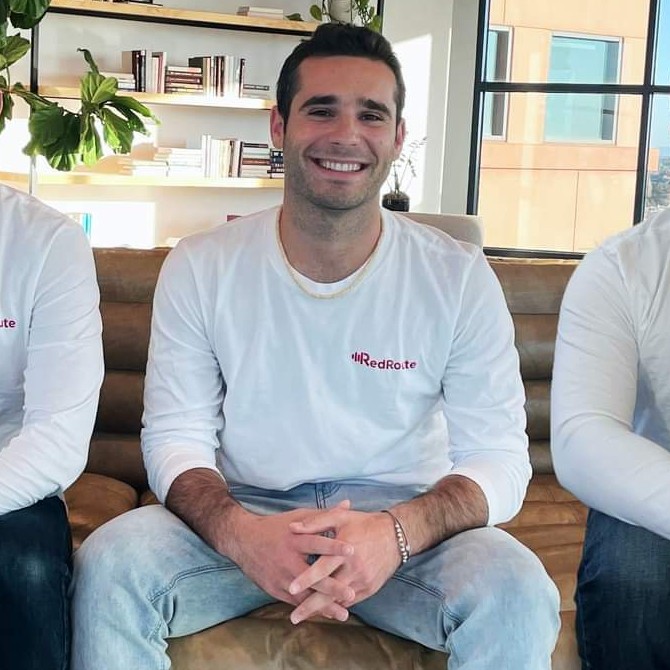
Brian Schiff
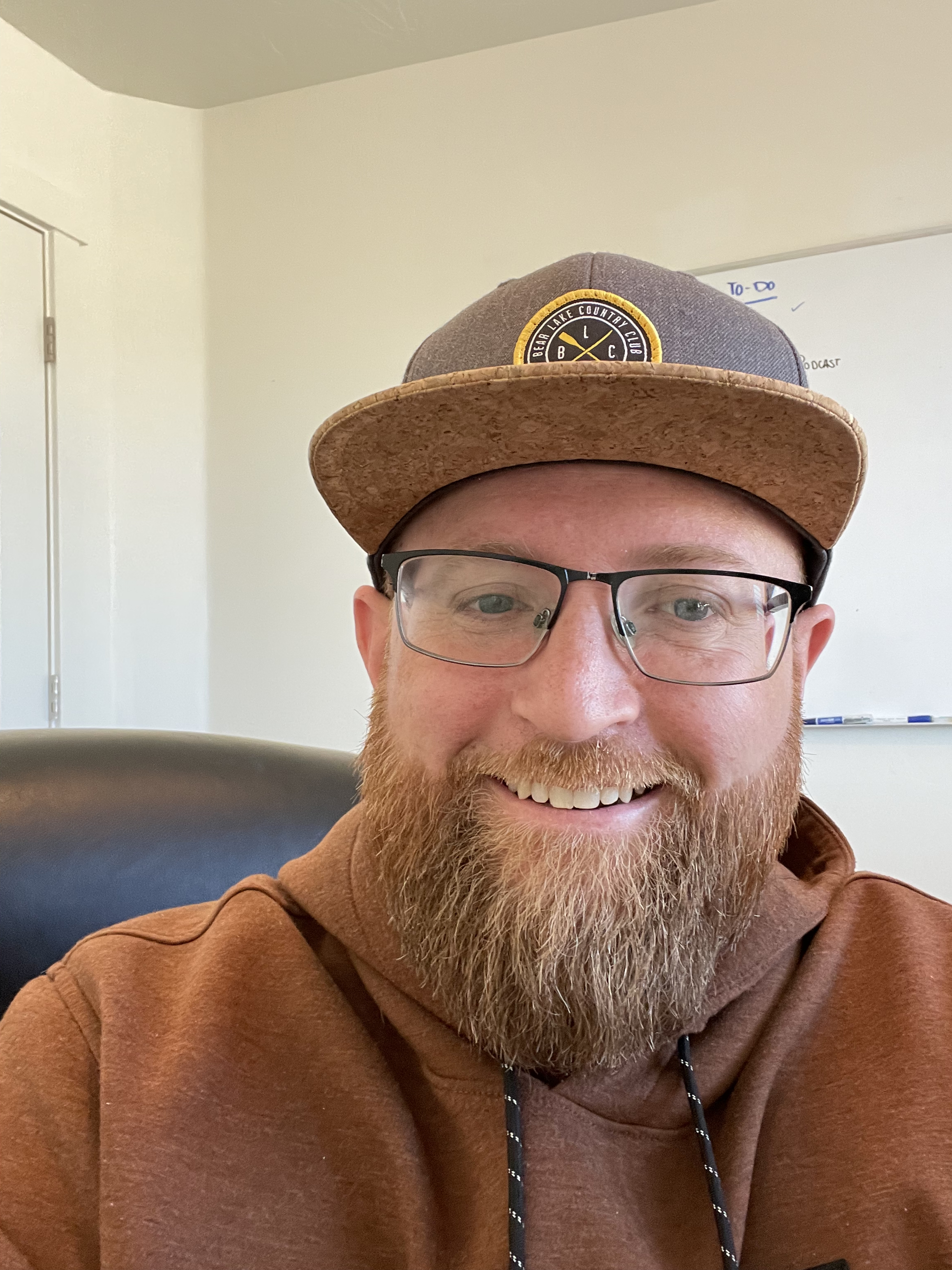
James Gilbert
Today's Guests

